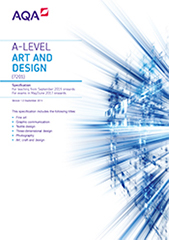3.8 Photography
Students should be introduced to a variety of experiences that explore a range of photographic media, techniques and processes. They should be made aware of both traditional and new technologies.
Students should explore relevant images, artefacts and resources relating to a range of art, craft and design, from the past and from recent times, including European and non-European examples. This should be integral to the investigating and making processes. Students' responses to these examples must be shown through practical and critical activities that demonstrate their understanding of different styles, genres and traditions.
Students should use sketchbooks/workbooks/journals to underpin their work where appropriate. They may wish to develop their drawing skills in order to produce storyboards, thumbnail sketches and/or diagrams, where appropriate.
Students may use traditional methods and/or digital techniques to produce images.
Students should be aware of the four assessment objectives to be demonstrated in the context of the content and skills presented and of the importance of process as well as product.
Areas of study
Students are required to work in one or more area(s) of photography, such as those listed below. They may explore overlapping areas and combinations of areas:
- portraiture
- landscape photography (working from the urban, rural and/or coastal environment)
- still life photography (working from objects or from the natural world)
- documentary photography, photojournalism
- fashion photography
- experimental imagery
- multimedia
- photographic installation
- moving image (video, film, animation).
Skills and techniques
Students will be expected to demonstrate skills, as defined in Overarching knowledge, understanding and skills, in the context of their chosen area(s) of photography. Students will be required to demonstrate skills in all of the following:
- the ability to explore elements of visual language, line, form, colour, pattern and texture in the context of photography
- awareness of intended audience or purpose for their chosen area(s) of photography
- the ability to respond to an issue, theme, concept or idea, or work to a brief or answer a need in photography
- appreciation of viewpoint, composition, aperture, depth of field, shutter speed and movement
- appropriate use of the camera, film, lenses, filters and lighting for work in their chosen area(s) of photography
- understanding of techniques related to the production of photographic images and, where appropriate, presentation and layout.
Knowledge and understanding
Students must show knowledge and understanding of:
- relevant materials, processes, technologies and resources
- how ideas, feelings and meanings can be conveyed and interpreted in images and artefacts created in their chosen area(s) of photography
- historical and contemporary developments and different styles and genres
- how images and artefacts relate to social, environmental, cultural and/or ethical contexts, and to the time and place in which they were created
- continuity and change in different styles, genres and traditions relevant to photography
- a working vocabulary and specialist terminology that is relevant to their chosen area(s) of photography.
